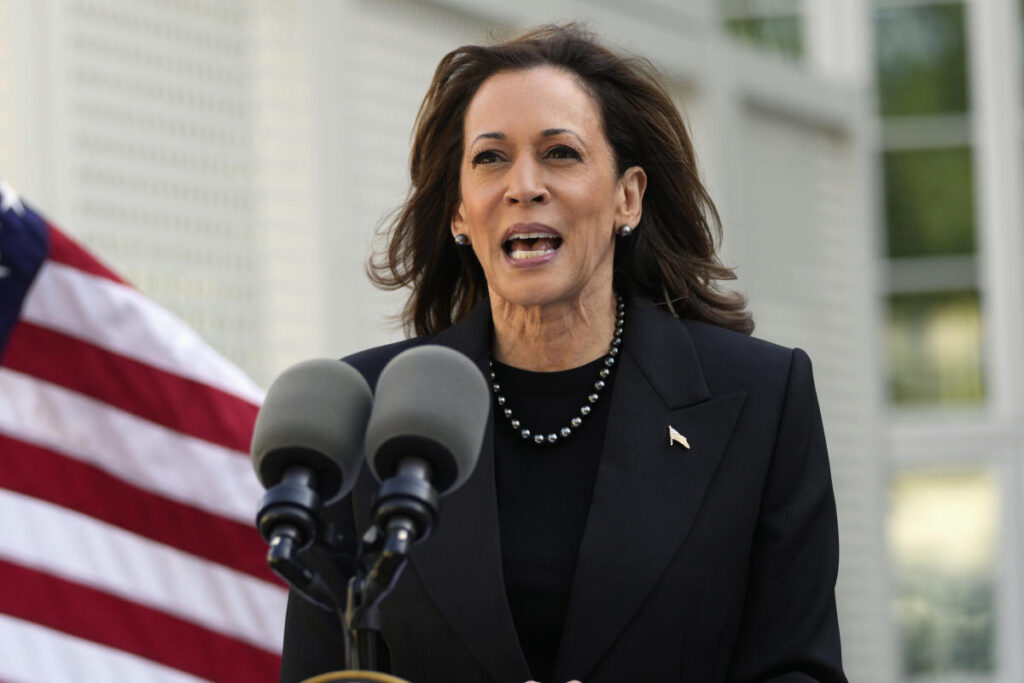As Election Day approaches, Vice President Kamala Harris faces increasing pressure to delineate how her potential presidency would differ from that of President Joe Biden. In a recent appearance on ABC’s “The View,” she highlighted their individuality, stating, “We’re obviously two different people,” and emphasized her unique leadership sensibilities. However, when directly asked to specify a decision made by Biden that she would approach differently, Harris hesitated, revealing the tightrope she walks between loyalty to the current administration and the need to assert her identity as a candidate for change. Her commitment to bipartisanship was also evident when she mentioned her intention to include a Republican in her Cabinet, showcasing an effort to connect with broader political audiences.
Harris’s campaign has thus far capitalized on her age and background to suggest a generational shift from both Biden and her Republican rival, former President Donald Trump. At 58, she represents a younger alternative to the aging leadership of the Democratic Party, which is essential as she seeks to appeal to voters longing for change. Despite her unique position as the first Black and South Asian woman to run for president from a major party, Harris’s challenge lies in articulating her differences from Biden while remaining allied with an administration that resonates with key parts of her voter base.
Despite the groundwork laid out in her campaign, Harris remains hesitant to critique Biden overtly, out of concern for undermining a highly popular legislative agenda established during his presidency, including infrastructure improvements and drug cost reductions. Polls illustrate a complicated political landscape: while Biden’s popularity lags, with 55% of Americans viewing him unfavorably, Harris enjoys a slightly warmer reception with a 50% favorability rating. This discrepancy indicates that while voters are seeking novelty and change, they are still cautious about negatively impacting the party by criticizing a sitting president.
To carve out a more distinct identity in the race against Trump, Harris has proposed some policies that diverge from Biden’s approach, such as advocating for a smaller increase to the capital gains tax. However, these distinctions have been modest, and in some cases, the Biden administration has promptly adopted her positions. This dynamic has led to criticisms from Trump, who has seized on Harris’s concession of not identifying any Biden decisions she would alter, labeling her stance as “disqualifying” during his campaign rally. Harris’s allies, including former communications director Jamal Simmons, have urged her to take a firmer stance to reassure voters she is not merely a continuation of Biden’s policies.
Navigating her position as a vice president running for the presidency presents unique hurdles, especially in light of the recent political context. Harris’s situation is compounded by the short timeline of her candidacy following Biden’s withdrawal as the Democratic nominee. In similar situations historically, other vice presidents, like Al Gore and George H.W. Bush, have also struggled to distinguish themselves from their predecessors, especially in the face of public dissatisfaction. The pressure on Harris to create an effective narrative of change is amplified by Biden’s unpopularity amid a broader anti-incumbent sentiment in the electorate.
Amid the pressure to position herself as an agent of change, Harris’s campaign strategists recognize the importance of emphasizing a forward-looking agenda, marking her election as a departure from the current administration’s status quo. This framing of a “new way forward” not only contrasts with her opponents but also caters to the electorate’s desire for generational leadership. As she balances her loyalty to Biden with the expectations of voters wanting innovative solutions, Harris’s path to the presidency will depend heavily on her ability to communicate clear distinctions while fostering confidence among her supporters that she embodies a transformative vision for the future.

